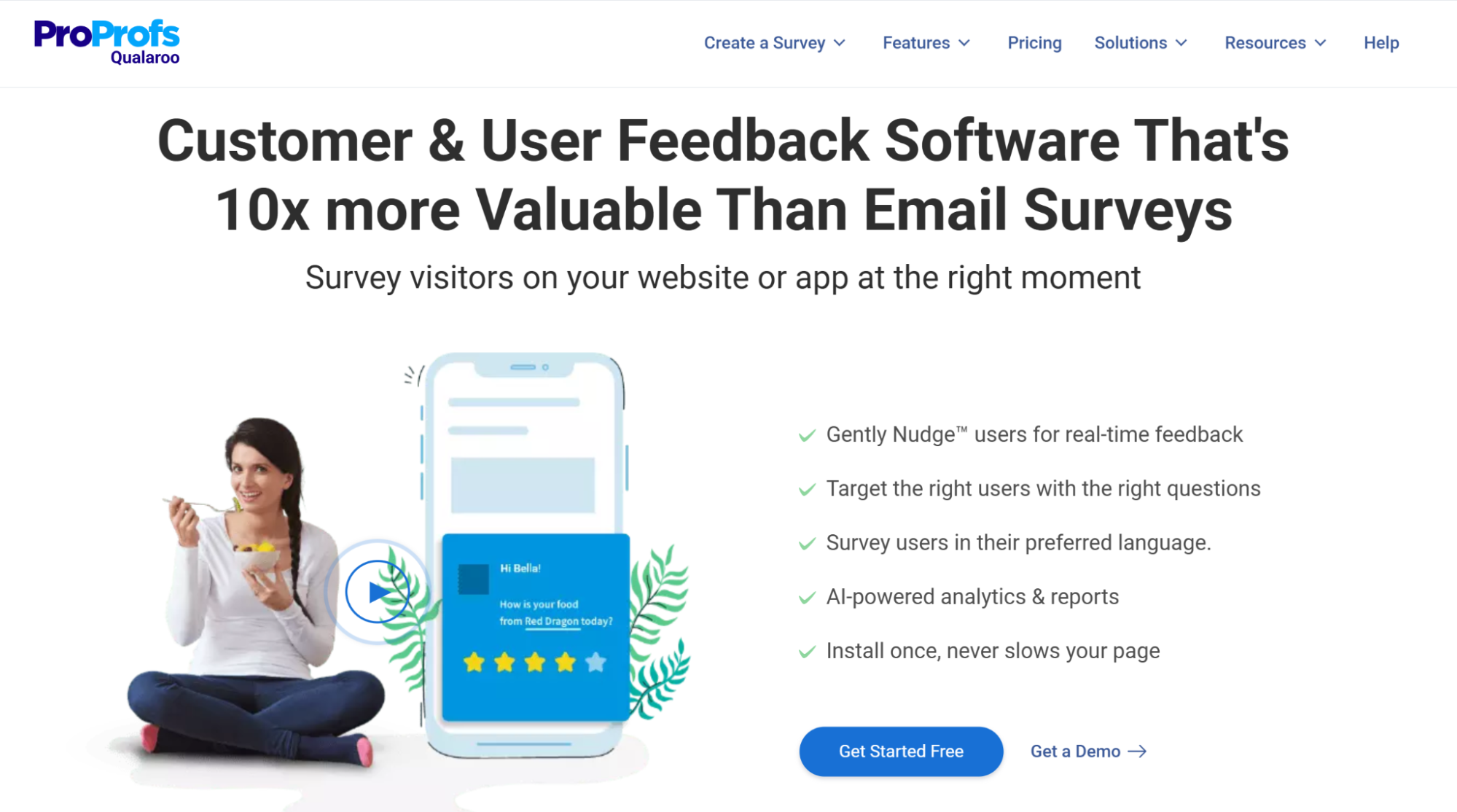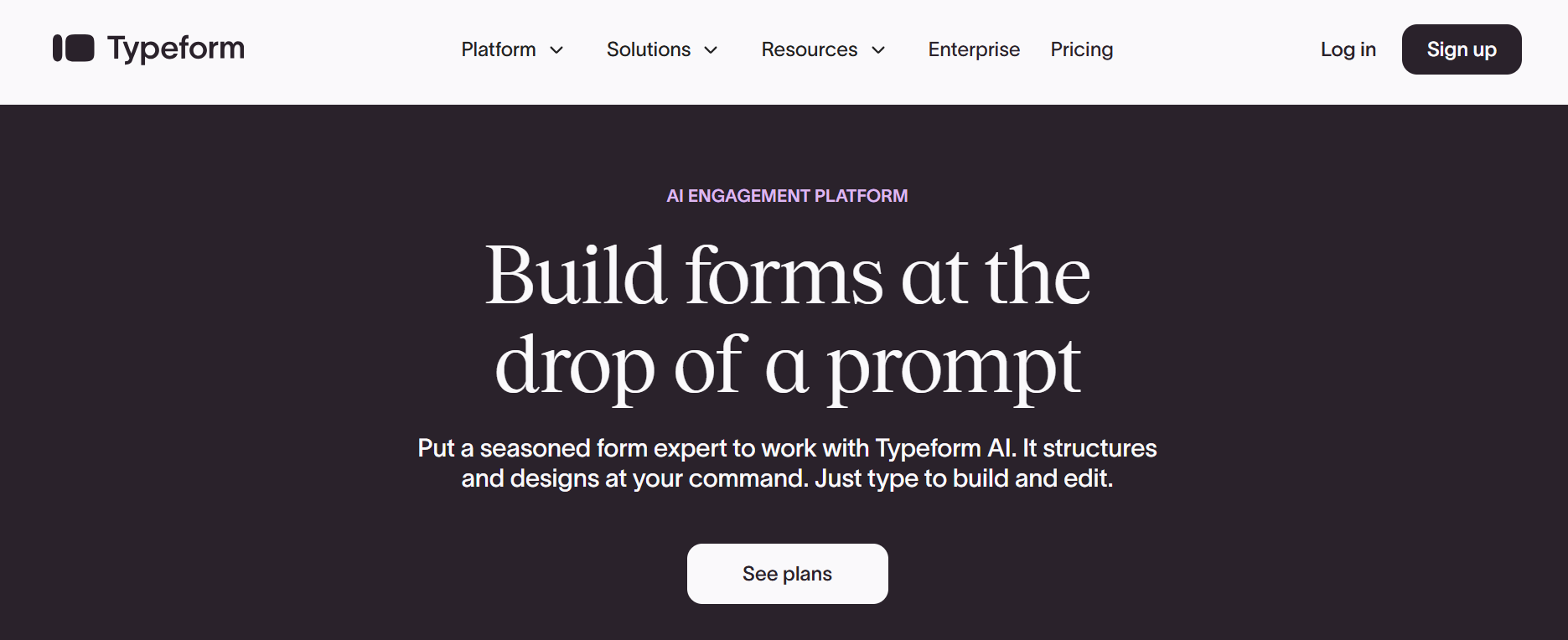
Discover the best customer feedback software to help you collect insights, improve user experience, and make smarter decisions in 2025.
Many customer feedback software claim to provide user insights, but few deliver meaningful results.
We’ve seen businesses set up long, complicated surveys nobody completes. They add feedback buttons hidden in footers. They send email questionnaires that often end up in spam. Then they wonder why their customer insights feel thin, outdated, or unclear.
The problem isn’t that good customer feedback software don’t exist. They do. But if you don’t know what you’re trying to learn or when to ask customers, even the best tool will collect dust in your tech stack.
Below, we’ll walk you through 10 customer feedback tools that actually help you understand your customers, improve products faster, and make smarter decisions. You’ll learn what makes each tool effective, when to use it, and how to maximize its value without wasting time.
1. Qualaroo: Best for Capturing In-Context User Insights
Qualaroo is one of the few customer feedback software designed to gather insights and automated feedback while users are actively browsing your site or app. Instead of relying on long surveys sent after the fact, Qualaroo uses lightweight, behavior-triggered “Nudges” to capture thoughts in the moment, when decisions, frustrations, or hesitations are actually happening.
Key Features
- Behavior-triggered Nudges that appear based on scroll depth, exit intent, time on page, or custom user actions.
- AI-driven sentiment analysis to automatically detect tone and emotional patterns in open-text responses.
- Template library covering UX, onboarding, product launches, CSAT, churn, and post-purchase feedback.
- Integrations with HubSpot, Salesforce, Slack, Figma, Amplitude, and other analytics or workflow tools.
- Multi-platform support including website, mobile app, and prototype feedback for consistent insights across touchpoints.
Pros
- Lightweight and non-intrusive feedback collection improves response quality.
- Highly contextual insights compared to email or post-experience surveys.
- AI reduces manual analysis time with sentiment scoring and smart tagging.
- Works well for both early-stage prototypes and live user experiences.
Cons
- Requires an Internet connection to run.
- A dedicated account manager is not available with free plan.
Pricing
- Qualaroo offers a starter plan beginning at $19.99/month with basic email surveys.
- Essentials & Business tiers add contextual surveys, advanced targeting, customization, and reporting features.
- Enterprise pricing is available for high-traffic brands needing unlimited responses and deeper integrations.
- A free plan is available for teams who want to test core features before upgrading.
2. SurveyMonkey: Best for Enterprise-Grade, Large-Scale Surveys
SurveyMonkey remains a leading choice for companies that need structured, compliant, and data-heavy customer feedback programs. It’s built for teams that manage large audiences and require advanced logic, secure data handling, and collaboration across multiple departments.
Key Features
- Advanced skip logic, branching paths, answer piping, and dynamic question rules.
- Multi-user collaboration with shared libraries, approval workflows, and team permissions.
- Global distribution support for email, website embeds, and research panels.
- Enterprise-grade compliance with data encryption, HIPAA options, and SSO.
- Robust dashboards for NPS, CSAT, benchmarking, and longitudinal trend analysis.
Pros
- Highly scalable for large companies and ongoing research programs.
- Extremely flexible logic capabilities for sophisticated survey flows.
- Strong compliance and governance features ideal for enterprise environments.
- Works across departments (CX, HR, product, marketing).
Cons
- Can feel overly complex for small businesses needing simple surveys.
- Many advanced features are available only in high-tier plans.
- The interface becomes heavy once many collaborators and surveys are added.
Pricing
- Team plans begin at around $30/user/month for core features.
- Enterprise plans include enhanced security, governance, and advanced logic, with pricing available on request.
- SurveyMonkey Audience provides paid respondent panels for fast data collection.
- A free basic version exists, but with limited responses and features.
3. Typeform: Best for High-Engagement, Conversational Surveys
Typeform has built its reputation on surveys that feel more like conversations than forms. Its clean, interactive layout encourages users to answer one question at a time, which often leads to higher completion rates, especially on mobile. If you want feedback that feels personal, polished, and aligned with your brand’s tone, Typeform is a standout choice.
Key Features
- Conversational survey layout that presents one question at a time to reduce user friction.
- Logic jumps, branching, and personalized question flows based on previous answers.
- Visually appealing templates with brand-specific customization for fonts, colors, and layouts.
- Embeddable forms for websites, emails, landing pages, and in-app experiences.
- Integrations with HubSpot, Notion, Slack, Google Sheets, Zapier, Mailchimp, and CRMs.
Pros
- High completion rates due to clean, intuitive, human-friendly design.
- Great visual customization for brands that prioritize aesthetics.
- Easy to build, manage, and integrate into workflows.
- Works well for marketing and product teams alike.
Cons
- Lower-tier plans lack deep analytics and advanced reporting.
- Long or media-heavy forms may load slowly on older devices.
- Pricing increases significantly for high response volumes and advanced logic.
Pricing
- Typeform starts at $25/month for basic logic and form customization.
- Plus and Business plans unlock higher response limits, more integrations, and advanced branding options.
- Enterprise plans are available for large companies requiring SSO, enhanced security, and priority support.
- A limited free version exists for testing simple forms.
4. Hotjar: Best for Understanding On-Site Behavior + Direct Feedback
Hotjar combines behavioral analytics with customer feedback, giving you a full picture of how users interact with your website — and why they behave the way they do. Instead of relying only on form responses, you can see heatmaps, scroll patterns, and user recordings that reveal friction points in real time. Paired with on-page surveys, it helps you understand what customers think while watching what they do.
Key Features
- Heatmaps showing click, scroll, and movement behavior to identify problem areas on key pages.
- Session recordings that reveal user hesitation, confusion, and navigation challenges.
- On-site feedback widgets, popups, and opinion scales for real-time input.
- Funnel analysis to understand where users drop off and what behavior leads up to it.
- Behavior-based triggers including rage-click detection, exit intent, and inactivity for targeted surveys.
Pros
- Offers a complete view of behavior + feedback in one tool.
- Extremely helpful for redesigns, A/B testing, and conversion optimization.
- Easy to install with a single tracking script.
- Provides granular insight that generic surveys miss.
Cons
- Requires steady traffic to generate useful behavioral patterns.
- May slow down page performance if the script is not optimized.
- Higher-tier plans needed for unlimited recordings and advanced segmentation.
Pricing
- Hotjar provides a free plan with limited heatmaps and recordings for small websites.
- Paid plans start at $49/month with increased data limits and access to advanced features.
- Pro & Enterprise tiers offer enhanced filtering, longer data retention, and higher traffic capacity.
5. Zonka Feedback: Best for Multi-Channel, Multi-Location Feedback Collection
Zonka Feedback is built for businesses that need to collect customer insights across multiple locations and touchpoints, from websites and emails to SMS, kiosks, and offline devices. It’s a strong fit for retail, hospitality, healthcare, SaaS, and multi-location brands that want a unified view of customer sentiment in real time.
Key Features
- Multi-channel surveys via email, SMS, website widgets, QR codes, kiosks, tablets, and offline devices.
- Templates for NPS, CSAT, CES, patient feedback, facility reviews, and multi-location reporting.
- Real-time dashboards showing location-based performance, trends, and customer sentiment.
- Automated workflows with triggers for post-purchase, post-visit, or milestone-based surveys.
- Integrations with HubSpot, Salesforce, Zendesk, Intercom, Freshdesk, and Slack.
Pros
- Ideal for businesses that manage multiple physical locations or service points.
- Offline survey mode works well for environments with limited connectivity.
- Strong dashboards and segmentation for identifying location-specific issues.
- Dynamic deployment options make it suitable for various industries.
Cons
- Interface can feel utilitarian compared to more design-focused tools.
- Advanced automation features require higher-tier plans.
- Large, multi-location setups may involve onboarding time for staff.
Pricing
- Zonka Feedback offers custom pricing tailored to your needs.
- SMS and offline surveys may incur additional usage-based costs depending on volume.
- Custom pricing is available for multi-location brands with complex requirements.
Final Thoughts
These ten tools solve different problems, but they all do one thing well: help you understand your customers before issues turn into churn, complaints, or lost revenue.
You don’t need every tool on this list. Just pick the one that solves your most urgent feedback challenge right now:
- If you want in-the-moment insights while customers browse, start with Qualaroo.
- If you rely on structured research at scale, SurveyMonkey handles heavy workloads.
- If engagement is your biggest challenge, Typeform keeps users answering.
- And if you want to pair behavior analytics with real-time feedback, Hotjar is a smart choice.
Choose the tool that aligns with your current workflow, not the one with the longest feature list. When you gather the right feedback at the right time, you’ll make better decisions, fix friction faster, and build the kind of customer experience that keeps people coming back.
Was this news helpful?











 Yes, great stuff!
Yes, great stuff! I’m not sure
I’m not sure No, doesn’t relate
No, doesn’t relate



